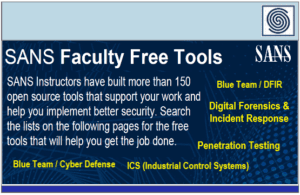Source: www.mcafee.com – Author: Amy Bunn.
Whether it tags along via a smartphone, laptop, tablet, or wearable, it seems like the internet follows us wherever we go nowadays. Yet there’s something else that follows us around as well — a growing body of personal info that we create while banking, shopping, and simply browsing the internet. And no doubt about it, our info is terrifically valuable.
What makes it so valuable? It’s no exaggeration to say that your personal info is the key to your digital life, along with your financial and civic life as well. Aside from using it to create accounts and logins, it’s further tied to everything from your bank accounts and credit cards to your driver’s license and your tax refund.
Needless to say, your personal info is something that needs protecting, so let’s check out several ways you can do just that.
What is personal info?
What is personal info? It’s info about you that others can use to identify you either directly or indirectly. Thus, that info could identify you on its own. Or it could identify you when it’s linked to other identifiers, like the ones linked with the devices, apps, tools, and protocols you use.
A prime example of direct personal info is your tax ID number because it’s unique and directly tied to your name. Further instances include your facial image to unlock your smartphone, your medical records, your finances, and your phone number because each of these can be easily linked back to you.
Then there are those indirect pieces of personal info that act as helpers. While they might not identify you on their own, a few of them can when they’re added together. These helpers include things like internet protocol addresses, the unique device ID of your smartphone, or other identifiers such as radio frequency identification tags.
You can also find pieces of your personal info in the accounts you use, like your Google to Apple IDs, which can be linked to your name, your email address, and the apps you have. You’ll also find it in the apps you use. For example, there’s personal info in the app you use to map your walks and runs, because the combination of your smartphone’s unique device ID and GPS tracking can be used in conjunction with other info to identify who you are. Not to mention where you typically like to do your 5k hill days. The same goes for messenger apps, which can collect how you interact with others, how often you use the app, and your location info based on your IP address, GPS info, or both.
In all, there’s a cloud of personal info that follows us around as we go about our day online. Some wisps of that cloud are more personally identifying than others. Yet gather enough of it, and your personal info can create a high-resolution snapshot of you — who you are, what you’re doing, when you’re doing it, and even where you’re doing it, too — particularly if it gets into the wrong hands.
Remember Pig-Pen, the character straight from the old funny pages of Charles Schultz’s Charlie Brown? He’s hard to forget with that ever-present cloud of dust following him around. Charlie Brown once said, “He may be carrying the soil that trod upon by Solomon or Nebuchadnezzar or Genghis Khan!” It’s the same with us and our personal info, except the cloud surrounding us, isn’t the dust of kings and conquerors. They’re motes of info that are of tremendously high value to crooks and bad actors — whether for purposes of identity theft or invasion of privacy.
Protecting your personal info protects your identity and privacy
With all the personal info we create and share on the internet, that calls for protecting it. Otherwise, our personal info could fall into the hands of a hacker or identity thief and end up getting abused, in potentially painful and costly ways.
Here are several things you can do to help ensure that what’s private stays that way:
1) Use a complete security platform that can also protect your privacy.
Square One is to protect your devices with comprehensive online protection software. This defends you against the latest virus, malware, spyware, and ransomware attacks plus further protects your privacy and identity. Also, it can provide strong password protection by generating and automatically storing complex passwords to keep your credentials safer from hackers and crooks who might try to force their way into your accounts.
Further, security software can also include a firewall that blocks unwanted traffic from entering your home network, such as an attacker poking around for network vulnerabilities so that they can “break in” to your computer and steal info.
2) Use a VPN.
Also known as a virtual private network, a VPN helps protect your vital personal info and other data with bank-grade encryption. The VPN encrypts your internet connection to keep your online activity private on any network, even public networks. Using a public network without a VPN can increase your risk because others on the network can potentially spy on your browsing and activity.
If you’re new to the notion of using a VPN, check out this article on VPNs and how to choose one so that you can get the best protection and privacy possible. (Our McAfee+ plans offer a VPN as part of your subscription.)
3) Keep a close grip on your Social Security Number.
In the U.S., the Social Security Number (SSN) is one of the most prized pieces of personal info as it unlocks the door to employment, finances, and much more. First up, keep a close grip on it. Literally. Store your card in a secure location. Not your purse or wallet.
Certain businesses and medical practices might ask you for your SSN for billing purposes and the like. You don’t have to provide it (although some businesses could refuse service if you don’t), and you can always ask if they will accept some alternative form of info. However, there are a handful of instances where an SSN is a requirement. These include:
- Employment or contracting with a business.
- Group health insurance.
- Financial and real estate transactions.
- Applying for credit cards, car loans, and so forth.
Be aware that hackers often get a hold of SSNs because the organization holding that info gets hacked or compromised itself. Minimizing how often you provide your SSN can offer an extra degree of protection.
4) Protect your files.
Protecting your files with encryption is a core concept in data and info security, and thus it’s a powerful way to protect your personal info. It involves transforming data or info into code that requires a digital key to access it in its original, unencrypted format. For example, McAfee+ includes File Lock, which is our file encryption feature that lets you lock important files in secure digital vaults on your device.
Additionally, you can also delete sensitive files with an application such as McAfee Shredder, which securely deletes files so that thieves can’t access them. (Quick fact: deleting files in your trash doesn’t delete them in the truest sense. They’re still there until they’re “shredded” or otherwise overwritten such that they can’t be restored.)
5) Steer clear of those internet “quizzes.”
Which Marvel Universe superhero are you? Does it really matter? After all, such quizzes and social media posts are often grifting pieces of your personal info in a seemingly playful way. While you’re not giving up your SSN, you might be giving up things like your birthday, your pet’s name, your first car…things that people often use to compose their passwords or use as answers to common security questions on banking and financial sites. The one way to pass this kind of quiz is not to take it!
6) Be on the lookout for phishing attacks.
A far more direct form of separating you from your personal info is phishing attacks. Posing as emails from known or trusted brands, financial institutions, or even a friend or family member, a scammer’s attack will try to trick you into sharing important info like your logins, account numbers, credit card numbers, and so on under the guise of providing customer service.
How do you spot such emails? Well, it’s getting a little tougher nowadays because scammers are getting more sophisticated and can make their phishing emails look increasingly legitimate. Even more so with AI tools. However, there are several ways you can spot a phishing email and phony websites. Moreover, our McAfee Scam Protection can do it for you.
7) Keep mum in your social media profile.
You can take two steps to help protect your personal info from being at risk via social media. One, think twice about what you share in that post or photo — like the location of your child’s school or the license plate on your car. Two, set your profile to private so that only friends can see it. Social media platforms like Facebook, Instagram, and others give you the option of making your profile and posts visible to friends only. Choosing this setting keeps the broader internet from seeing what you’re doing, saying, and posting, which can help protect your privacy and gives a scammer less info to exploit. Using our Social Privacy Manager can make that even easier. With only a few clicks, it can adjust more than 100 privacy settings across their social media accounts — making them more private as a result.
8) Look for HTTPS when you browse.
The “S” stands for secure. Any time you’re shopping, banking, or sharing any kind of personal info, look for “https” at the start of the web address. Some browsers also indicate HTTPS by showing a small “lock” icon. Doing otherwise on plain HTTP sites exposes your personal info for anyone who cares to monitor that site for unsecured connections.
9) Lock your devices.
By locking your devices, you protect yourself that much better from personal info and data theft in the event your device is lost, stolen, or even left unattended for a short stretch. Use your password, PIN, facial recognition, thumbprint ID, what have you. Just lock your stuff. In the case of your smartphones, read up on how you can locate your phone or even wipe it remotely if you need to. Apple provides iOS users with a step-by-step guide for remotely wiping devices, and Google offers up a guide for Android users as well.
10) Keep tabs on your credit — and your personal info.
Theft of your personal info can lead to credit cards and other accounts being opened falsely in your name. What’s more, it can take some time before you even become aware of it, such as when your credit score takes a hit or a bill collector comes calling. By checking your credit, you can fix any issues that come up, as companies typically have a clear-cut process for contesting any fraud. You can get a free credit report in the U.S. via the Federal Trade Commission (FTC) and likewise, other nations like the UK have similar free offerings as well.
Consider identity theft protection as well. A strong identity theft protection package pairs well with keeping track of your credit and offers cyber monitoring that scans the dark web to detect for misuse of your personal info. With our identity protection service, we help relieve the burden of identity theft if the unfortunate happens to you with $2M coverage for lawyer fees, travel expenses, lost wages, and more.

Introducing McAfee+
Identity theft protection and privacy for your digital life
Original Post url: https://www.mcafee.com/blogs/privacy-identity-protection/take-it-personally-ten-tips-for-protecting-your-personally-identifiable-information-pii/
Category & Tags: How To Guides and Tutorials,Privacy & Identity Protection,Phishing,PII,Personally Identifiable Information,What is PII,how to protect personally identifiable information – How To Guides and Tutorials,Privacy & Identity Protection,Phishing,PII,Personally Identifiable Information,What is PII,how to protect personally identifiable information
Views: 2




















































